






JURUTERA has an estimated readership of 198,000 professionals. Our esteemed readership consists of certified engineers, decision making corporate leaders, CEOs, government officials, project directors, entrepreneurs, project consultants, engineering consulting firms and companies involved with engineering products and services.
Our business partners can be assured that their products and services will be given the circulation and exposure they deserve, thus maintaining a sustained advertising presence to our core readers of decision-making engineers and technical experts. Our website offers an even wider market reach, with added international presence, aided by our international affiliation with official engineering bodies all over the world. Our online and offline advertising features such as banner advertising, article sponsorship and direct e-mail announcements have proven to be successful marketing strategies that will set the businesses of our partners apart from their competition.


For advertising enquiries, please contact:






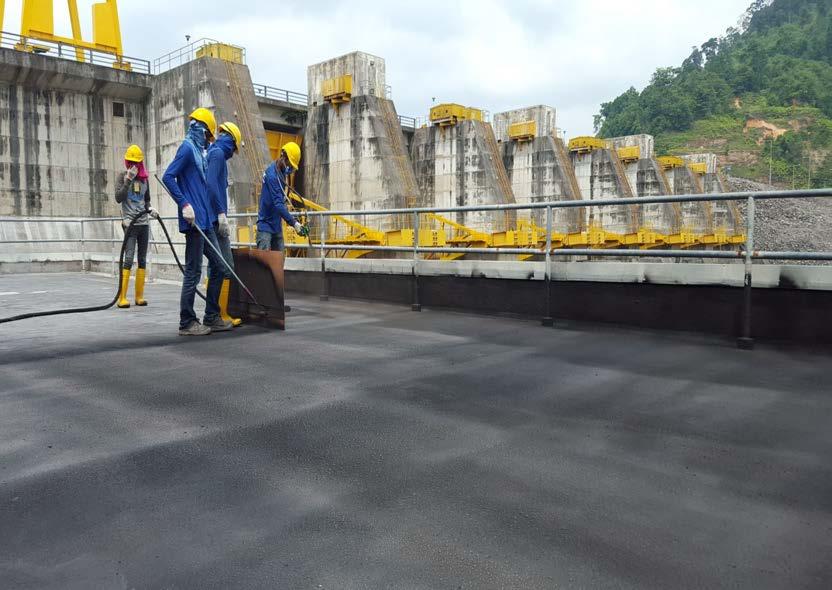


















HIKVISION (MALAYSIA) SDN. BHD.
301, Level 3 of Menara LGB,No. 1 Jalan Wan Kadir, Taman Tun Dr. Ismail, 60000 Kuala Lumpur
T +60327224000
F +60327224022
Sales Email: sales.my@hikvision.com


Number 09, SEPTEMBER 2019IEM Registered on 1 May 1959
Majlis Bagi s esi 2019/2020 (ieM Coun C il s ession 2019/2020)
yaN g D IPERT ua / P RESIDENT
Ir. David Lai Kong Phooi
T IMBala N yaN g D IPERT ua / D EP uT y P RESIDENT
Ir. Ong Ching Loon
n ai B Yang Dipertua / Vi C e p resi D ents
Ir. Prof. Dr Norlida bt Buniyamin, Ir. Prof. Dr Jeffrey Chiang Choong Luin, Ir. Ellias bin Saidin, Y.Bhg. First Admiral Dato’ Ir. Ahmad Murad bin Omar, Ir. Dr Tan Chee Fai, Ir. Hj. Mohd
Aman bin Hj. Idris, Ir. Dr Wang Hong Kok
s etiausaha Kehor M at / h onorarY seC retarY
Ir. Mohd Khir bin Muhammad
B ENDahaRI K E hoRM aT / hoNoRaRy T RE aSu RER
Ir. Chen Harn Shean
B EK aS ya N g DIPERT ua TER aKh IR / IMMEDI aTE Pa ST P RESIDENT
Ir. Dr Tan Yean Chin
BEK aS ya N g DIPERT ua / Pa ST P RESIDENTS
Y.Bhg. Academician Tan Sri Datuk Ir. (Dr) Hj. Ahmad Zaidee bin Laidin, Y.Bhg. Dato’ Ir. Dr Gue See Sew, Y.Bhg. Datuk Paduka Ir. (Dr) Hj. Keizrul bin Abdullah, Y.Bhg. Academician Dato’ Ir. Prof. Dr Chuah Hean Teik, Ir. Choo Kok Beng, Y.Bhg. Dato’ Ir. Lim Chow Hock
Wa K il aWaM / Ci V il r epresentati Ve
Ir. Dr Lee Yun Fook
Wa K il MeK ani K al / MeC hani C al r epresentati Ve
Ir. Fam Yew Hin
Wa K il e le KtriK / e leC tri C al r epresentati Ve Ir. Lim Kim Ten
Wa K il s tru K tur / s tru C tural r epresentati Ve
Ir. Dr Ng Soon Ching
Wa K il Ki M ia / Che MiC al r epresentati Ve
Ir. Prof. Dr Lee Tin Sin

WaK il lain-lain D isplin / r epresentati V e to other Dis C iplines
Ir. Dr Bhuvendhraa Rudrusamy
WaK il M ulti MeD ia Dan iCt / iCt anD Multi MeD ia r epresentati Ve
Ir. Dr David Chuah Joon Huang
Wa KI l Ju Ru TER a Wa NITa / WoMaN EN g INEERS R EPRESENTaTI vE
Ir. Rusnida bt Talib
ahli M ajlis / Coun C il MeMB ers
Ir. Dr Leong Wai Yie, Ir. Razmahwata Mohd Razalli, Ir. Abdul Razak Yakob, Ir. Yau Chau Fong, Y.Bhg. Dato’ Ir. Foong Choy Chye, Y.Bhg. Dato’ Ir. Kisai bin Rahmat, Y.Bhg. Dato’ Ir. Nor Hisham Mohd Ghazali, Ir. Toh Chin Kok, Ir. Dr Jeyanthi Ramasamy, Ir. Yim Hon Wa, Ir. Yam Teong Sian, Y.Bhg. Dato’ Ir. Fakharazi bin Wahijan, Ir. Yasotha Ramachandran Chetty, Ir. Mohmad Asari bin Daud, Ir. Ng Beng Hooi, Ir. Dr Lai Khin Wee, Ir. Prof. Dr Ruslan bin Hassan, Ir. Mah Siew Kien, Y.Bhg. Dato’ Ir. Mohd Azmi bin Ismail, Ir. Ng Yong Kong, Ir. Dr Mui Kai Yin, Y.Bhg. Dato’ Ir. Noor Azmi bin Jaafar, Ir. Ting Chek Choon, Ir. Sukhairul Nizam bin Abd Razak, Ir. Lai Sze Ching, Y.Bhg. Dato’ Ir. Dr Ahmad Anuar bin Othman, Y.Bhg. Dato’ Ir. (Dr) Andy Seo Kian Haw, Y.Bhg. Dato’ Seri Ir. Dr Zaini bin Ujang, Ir. Omar bin Mat Piah WaK il B ahagian jurutera sis WaZ ah / Young engineers seC tion
REPRESENTaTI v ES
Dr Yew Weng Kean, Mr. Kuugan Thangarajoo pengerusi CaWangan / B ran C h C hair M an
1. Pulau Pinang: Ir. Yau Ann Nian
2. Selatan: Ir. Teo Ki Yuee
3. Perak: Ir. Simon Yeong Chin Chow
4. Kedah-Perlis: Ir. Haji Abdullah bin Othman
5. Negeri Sembilan: Ir. Dr Oh Seong Por 6. Kelantan: Ir. Abrizan bin Abdul Kadir
7. Terengganu: Ir. Abdullah Zawawi bin Haji Mohamad Noor
8. Melaka: Ir. Sreedaran a/l Raman
9. Sarawak: Ir. Haidel Heli
10. Sabah: Ir. James Yong Hon Min
11. Miri: Ir. Dr Lau Hieng Ho
12. Pahang: Y.Bhg. Dato’ Ir. Sharuddin bin Mohd Simin ahl I JaWaTa NK ua Sa IN fo RM a SI Da N PENERBITa N/ stan D ing C o MMittee on in F or M ation an D pu B li C ations 2019/2020
Pengerusi/Chairman: Ir. Dr Wang Hong Kok Naib Pengerusi/Vice Chairman: Ir. Dr David Chuah Joon Huang Setiausaha/Secretary: Ir. Lau Tai Onn Ketua Pengarang/Chief Editor: Ir. Dr Wang Hong Kok Pengarang Bulletin/Bulletin Editor: Ir. Abdul Razak Yakob Pengarang Prinsipal Jurnal/Principal Journal Editor: Ir. Dr David Chuah Joon Huang Pengerusi Perpustakaan/Library Chairman: Ir. C.M.M. Aboobucker Ahli-Ahli/Committee Members: Ir. Ong Guan Hock, Ir. Yee Thien Seng, Ir. Chin Mee Poon, Ir. Dr Oh Seong Por, Ms. Michelle Lau Chui Chui, Ir. Prof. Dr Abdul Aziz bin Abdul Samad, Ir. Razmahwata bin Mohd Razalli, Y.Bhg. Dato’ Ir. Nor Hisham Mohd Ghazali, Ir. Yasotha Ramachandran Chetty, Dr Sudharshan N. Raman, Ir. Dr Bhuvendhraa Rudrusamy, Ir. Hasril bin Hasini
l EMB aga PEN ga RaNg/EDITo RIal B oa RD 2019/2020
Ketua Pengarang/Chief Editor: Ir. Dr Wang Hong Kok
Pengarang Bulletin/Bulletin Editor: Ir. Abdul Razak Yakob Pengarang Prinsipal Jurnal/Principal Journal Editor: Ir. Dr David Chuah Joon Huang
Ahli-ahli/Committee Members: Ir. Lau Tai Onn, Ir. Ong Guan Hock, Ir. Yee Thien Seng, Ms. Michelle Lau Chui Chui, Ir. Dr Oh Seong Por, Ir. Yasotha Ramachandran Chetty, Dr Sudharshan N. Raman, Ir. Dr Bhuvendhraa Rudrusamy, Ir. Razmahwata bin Mohd Razalli
Secretariat: Janet Lim, May Lee
ThE INSTIT u TI oN of EN g INEERS , M alaySI a Bangunan Ingenieur, Lots 60 & 62, Jalan 52/4, P.O. Box 223, (Jalan Sultan), 46720 Petaling Jaya, Selangor Darul Ehsan. Tel: 603-7968 4001/4002 Fax: 603-7957 7678 E-mail: sec@iem.org.my Homepage: http://www.myiem.org.my
Tunnellers


5
COVER NOtE & EditOR’s NOtE
6 - 10
COVER stORy Next Generation Tunnellers
12
OBituaRy Dato’ Ir. Pang Leong Hoon (1932-2019)
13 - 22
fEatuRE aRtiClEs Limitation of Liability for Engineers ......................13
Structural Reliability Analysis for Fixed Offshore Platforms ...................................................18
23
ENGiNEER’s lENs Heritage Post Box
26 - 35
fORuM
Visits to MRT Project Sites at Bandar Malaysia North and Chan Sow Lin ......................26
Geotechnical Impact Assessments Due to Underground Tunnelling .......................................30
Technical Site Visit to Sungai Besi Tunnel ...........32
36
NEWs fROM BRaNCH Construction Projects in Sabah: Focus on Risk and Insurance
39
ENGiNEER’s adVENtuREs Trekking in Argentina
piNk paGE
Explore our full set of Professional and Integrated PUBLISHING MANAGEMENT SERVICES:
» Project Management
» Crea�ve Management
» Ad Space Management
» Mailing Management
» Print Management
• Annual Reports
• Booklets • Brochures
• Bun�ngs • Business Cards
• CD / DVD Replica�ons
• Calendars • Cards & Invita�ons
• Cer�ficates • Custom Prin�ngs
• Envelopes • Folders
• NCR Bill Books • Notepads
• Leaflets • Le�erheads
• Paper Bags • Posters
• S�ckers • Others









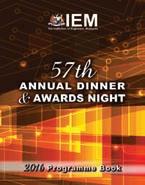


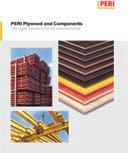






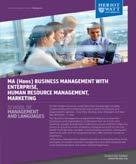




















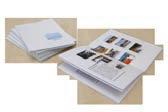

DIMENSION PUBLISHING SDN. BHD. (449732-T)
Level 18-01-02, PJX-HM Shah Tower, No. 16A, Persiaran Barat, 46050 Petaling Jaya, Selangor Darul Ehsan, Malaysia. Tel: +(603) 7493 1049 Fax: +(603) 7493 1047
E-mail: info@dimensionpublishing.com Website: www.dimensionpublishing.com Chairman
ROBERT MEBRUER
PATRICK LEUNG
SHIRLEY THAM shirley@dimensionpublishing.com
JOSEPH HOW joseph@dimensionpublishing.com
TAN BEE HONG bee@dimensionpublishing.com
PUTRI ZANINA & LAURA LEE putri@dimensionpublishing.com laura@dimensionpublishing.com
SUMATHI MANOKARAN sumathi@dimensionpublishing.com
NABEELA AHMAD beela@dimensionpublishing.com
THAM CHOON KIT ckit@dimensionpublishing.com
YEN YIN yenyin@dimensionpublishing.com
For advertisement placements and subscriptions, please contact: DIMENSION PUBLISHING SDN. BHD. (449732-T) Level 18-01-02, PJX-HM Shah Tower, No.16A, Persiaran Barat, 46050 Petaling Jaya, Selangor Darul Ehsan, Malaysia. Tel: +(603) 7493 1049 Fax: +(603) 7493 1047
E-mail: info@dimensionpublishing.com
Subscription Department E-mail: info@dimensionpublishing.com
Printed by
PERCETAKAN SKYLINE SDN. BHD. (135134-V) No. 35 - 37, Jalan 12/32B, TSI Business Industrial Park, Off Jalan Kepong, 52100 Kuala Lumpur. Mailer
SM UNIQUE MAILING SERVICES SDN. BHD. (44277-W) 80, Jalan Nadchatiram Satu, Taman Taynton View, Cheras, 56000 Kuala Lumpur, Malaysia. Tel: +(603) 9132 9192
JURUTERA MONTHLY CIRCULATION: 22,500 COPIES
Submission or placement of articles in JURUTERA could be made to the:Chief Editor THE INSTITUTION OF ENGINEERS, MALAYSIA (IEM) Bangunan Ingenieur, Lots 60 & 62, Jalan 52/4, P.O. Box 223 (Jalan Sultan), 46720 Petaling Jaya, Selangor. Tel: +(603) 7968 4001/4002 Fax: +(603) 7957 7678 E-mail: pub@iem.org.my or sec@iem.org.my IEM Website: http://www.myiem.org.my © 2019, The Institution of Engineers, Malaysia (IEM) and Dimension Publishing Sdn. Bhd.
PUBLICATION DISCLAIMER
The publication has been compiled by both IEM and Dimension with great care and they disclaim any duty to investigate any products, process, services, designs and the like which may be described in this publication. The appearance of any information in this publication does not necessarily constitute endorsement by IEM and Dimension. There is no guarantee that the information in this publication is free from errors. IEM and Dimension do not necessarily agree with the statement or the opinion expresssed in this publication.
COPYRIGHT
JURUTERA Bulletin of IEM is the official magazine of The Institution of Engineers, Malaysia (IEM) and is published by Dimension Publishing Sdn. Bhd. The Institution and the Publisher retain the copyright over all materials published in the magazine.
No part of this magazine may be reproduced and transmitted in any form or stored in any retrieval system of any nature without the prior written permission of IEM and the Publisher.

uring the last AGM of TUSTD, we made a commitment to nurture young talents as part of our strategy to boost a sustainable pool of tunnelling professionals in Malaysia. The theme for this issue of JURUTERA, Next Generation Tunnellers, is aptly chosen to reflect our initiative to promote opportunities for young professionals. A career in tunnelling is a great opportunity to work in a competence-driven and highly dedicated global environment. This industry will become more important than ever in the coming years.
In the cover story, 5 young professionals share their stories with JURUTERA. They speak about how they started in the tunnelling industry and how their education, training and experiences have helped them in their working lives, in particular embarking on their respective careers. Their enthusiasm and energy are as vibrant as ever to ensure a rewarding journey in their chosen careers.
The future of tunnelling is bright, both locally and globally. As the icing on the cake, IEM is proud to present the World Tunnel Congress 2020. The organising committee is working very hard to undertake various duties and tasks in preparation for this international event. As IEM members, let us contribute to make this event a success and so, put Malaysia on the world map.
by Ir. Razak Yakob Bulletin Editor

This month, TUSTD features the Next Generation Tunnellers, in line with the mega event, WTC 2020. Help make this international event a success because this is an IEM’s event. Let us provide support, in any way we can. Click on the link http://www.wtc2020.my/
I know everyone is busy and it’s hard to find time for IEM activities. So IEM would make talks and engagement sessions accessible to all members online. The last Mentor & Mentees Engineering Competency Development Engagement session was broadcasted successfully to the Perak and Southern Branches, despite some glitches due to facilities limitation. We hope to have more similar sessions in the future. If you want to do this for your event, please contact the Secretariat.
Take a break and ask “what are we doing and why are we doing this”. Sometimes we are caught up with work and we forget why we work so hard. If you are working to support your family, don’t forget your family in the first place; if you’re working for your own happiness, don’t forget to stay healthy. Always stop and think of why we do the things we do.
The Editorial Board wishes all a Happy Malaysia Day.
Let’s continue to engineer our country to a greater height!
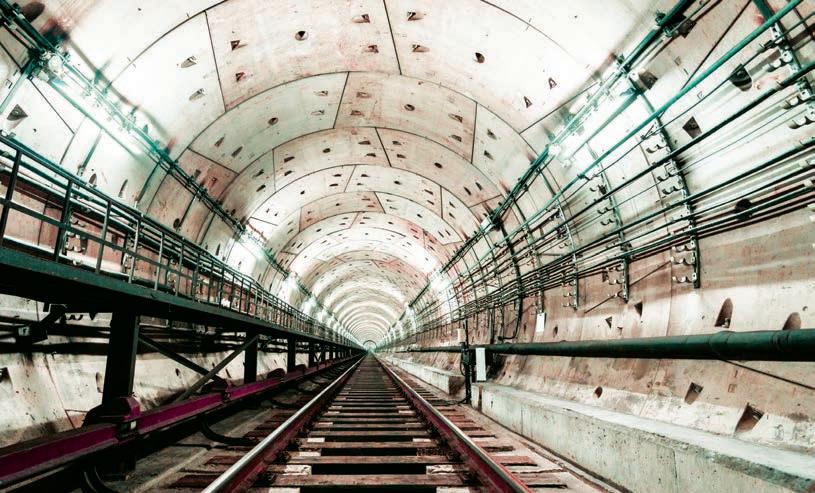

The tunnelling industry has been growing rapidly in Malaysia in the past decade. JURUTERA speaks to five young tunnellers who are making waves in this field.
Has your university education prepared you for a career in tunnelling?
Derek Eng gained his tunnelling knowledge on the job. “I studied the basics in university but it was skill acquired from actual work experience that became my foundation. When I started, it was a matter of sink or swim; this was something my degree hadn’t really prepared me for.”
Mandy Ang agrees. “Tunnelling is made up of several disciplines of engineering and the world class
education I received at University College London covered these disciplines. Every quarter, we were involved in high-paced case studies that addressed real life projects including tunnelling; these prepared me for the working world. However, the tunnelling industry is very technical and many skills have to be learnt hands-on.”
Dr Boon Chia Weng believes that knowledge is power. “Most people will agree that on-the-job training is required in the construction industry. But what I learnt in university gave
me an edge. It also ensured that I learnt and developed difficult design concepts quickly. At Oxford University, I developed the concept of an interaction diagram to better quantify the role of tunnel lining in relation to rock bolts. This was part of my thesis which won the Rocha Medal Award by the International Society for Rock Mechanics & Rock Engineering in 2016. Theoretical knowledge also enabled me to contribute further to tunnelling impact assessments, which was acknowledged with the Tan Sri Zainal Prize from IEM this year.”

Ir. Frankie Cheah said education gave him the foundation to be the best that he could in this field. “I received an all-rounded tertiary education, and was trained in the basics of civil engineering skills, such as concrete, structure, geotechnical and steel; all these were integral to my tunnelling career. Unfortunately, local universities don’t have core bachelor’s or master’s degrees in tunnelling though the Gamuda Tunnelling Training Academy has done a good job enabling young Malaysians to be equipped with hands-on skills.”
Dr Siti Norafida binti Jusoh says her education began at home. “The foundation was laid by my parents and my family. From young, I was encouraged to think out of the box and be creative when solving problems. Growing up in the kampung, nothing was off-limits for me. My mother always encouraged me to face challenges head-on, telling me that there was no problem I could not solve. Tunnelling is complex and one needs to have courage and the desire to try new things.”
Did you receive any mentorship which helped you to better adapt to the tunnelling industry? Have you offered any kind of mentorship?
“Not specifically but I received guidance from various mentors as I worked, a project-by-project experiential learning,” says Derek. “I was fortunate to learn from expats who were experts in their field. These included why a tunnel lining had to be a certain measurement and why a particular skill had to be applied a certain way. There were always challenges, such as a crack in the lining/grout and why the cement didn’t set. I learnt to fix problems from those who were willing to share. Knowledge should be transferred coherently and so, in return, I spend a fair bit of time with younger tunnellers. We’re always learning from each other and from the best.”
From his first day at his company, Dr Boon was fortunate to be able to
work with very capable management staff. “I worked in the geotechnical department and I learnt problem solving skills from my superior, Dr Ooi Lean Hock. In the design and technical department, I developed informal mentoring relationships with my superiors, especially those in the geotechnical team. My superiors at the head office are equally supportive and will check on my career development from time to time. From the operational and contractual perspectives, I realise that cross-exposures are important. I am fortunate that this is easily accessible when various departments work on the same project. But like Derek says, cross transferring exposure is important, and new tunnellers need to learn what they can, where they can.”
Mandy says: “My immediate superior was an invaluable guide when I entered the industry, helping me to understand what I was doing, mentoring me and shortening my learning curve. Like Derek, I found expats to be very helpful as TBM tunnelling was still new here then. The expatriate tunnelling experts on my first project were very generous with sharing their knowledge.”
Ir. Cheah says he is fortunate to have had mentors throughout his career. “As a young engineer, everyone I worked with became my mentor. Even today, I am still learning and I will keep on learning. Mentorship is not only what we learn from the experiences of seniors, but also respecting them for it. You don't have a future when you refuse to accept the former generation.”
Dr Siti has many mentors. “For now, I’m not specifically mentoring anyone, but I have students who learn through the many experiments we conduct at the university. These experiments and projects are as close to real life as possible. As for myself, I was mentored by my supervisors, Prof. Aminaton and Dr Hisham Mohamad as well as my IEM colleagues, especially Ir. Dr Rini Asnida and Ir. Khoo. They led me into this field, and I benefitted from their experiences.”

Derek Eng graduated in civil engineering from Universiti Sains Malaysia. The manager for one of the tunnel drives in the Sg BulohSerdang-Putrajaya Line is also involved in the development of the Tunnelling Training Academy. He has worked on the Variable Density Tunnel Boring Machine and received the Young Tunneller of the Year award for 2016 from the International Tunnelling Association.

Mandy Ang graduated from University College London, UK on full scholarship. Her academic excellence won her numerous sponsorships incl. ASEAN scholarship. Mandy Ang has over 9 years of tunnelling experience and is currently on her 3rd mega tunnel project with a record of 25 TBMs in total. She is currently an Assistant to Deputy Project Director overseeing Tenders, R&D and Business Development, at Gamuda. She recently completed the 5 km subsea twin tunnels of Hong Kong-ZhuhaiMacau Bridge project and was a finalist for Young Tunneller of the Year Award (2018).

Dr Siti Norafida binti Jusoh is senior lecturer at the Department of Geotechnics & Transportation, School of Civil Engineering, Universiti Teknologi Malaysia. She is deputy quality manager of Civil Engineering Testing Unit and group leader of Future Ready Engineering Education for 21st Century Teaching & Learning. She was previously a Co-Opt member of Tunnelling & Underground Space Technical Division, IEM from 2017-2019.

Dr Boon Chia Weng received his B. Eng. from Nanyang Technological University in 2009 and D.Phil. from Oxford University in 2013. He was awarded the Rocha Medal in 2016 by the International Society for Rock Mechanics and Rock Engineering (ISRM) and was a recipient of the Lee Kuan Yew Gold Medal, Professional Engineers Board Gold Medal (Singapore) and the Yang diPertuan Agong Scholarship (Malaysia). He is presently the Malaysian Representative for the International Tunnelling Association Young Member Group (ITAym), and is working with MMC-Gamuda KVMRT(T) Sdn. Bhd.

Ir. Frankie Cheah received his B.Eng. from Universiti Malaysia Sabah, and MSc from Nanyang Technological University Singapore. He has over 15 years geotechnical experience across the Asia region and is a committee member of the IEM Tunnelling & Underground Space Technical Division (TUSTD). He is associate director of AECOM Malaysia and lead geotechnical design engineer for the KVMRT Line 1 (Sg Buloh-Kajang Line and now Line 2 (Sg Buloh-Serdang-Putrajaya Line) for the Detailed Design Package 4 and Package 6. He is presently the Malaysian Deputy Chairman for the International Tunnelling Association Young Member Group (ITAym).
Have on-the-job training and experiences helped you to advance in your career?
At the start of his career, Derek worked 12-hour days and six-day weeks as a shift engineer. “During this time, I had to know the ins and outs of the job and of those on my team such as how to ensure continuity when using the TBM and how to make sure each lining was accurate. We also had quotas to fill and incentives for speedy work. I had to push the team and make sure we were prepared for the unexpected such as sudden drops in pressure. Tunnelling is a very skillsspecific job; you either have the skills or you don’t.”
Mandy believes that any success in tunnelling is due to the expertise of those working on the projects.“I made the choice to work overseas because I wanted the experience. I worked on building the largest tunnels using TBMs and I took the opportunity to be trained on-the-job as a TBM operator and superintendent on 12-hour shift in the tunnel. This way, I understood better everyone’s roles and how we all worked together. We had to be on point in everything we did and through mentorships and training, I became better at making management level decisions.”
Dr Boon is a strong advocate of onthe-job training.“I need to monitor and change design as I receive information from the various departments. On Line 1 (Klang Valley Mass Rapid Transit), on-the-job training allowed me to appreciate the importance of getting correctly, before site mobilisation, the capacities required by the machine and accessories for constructing the retaining walls for the shafts and stations launching or retrieving the TBMs. On Line 2, I spent time with the contracts team and the construction managers during the critical site investigation period, pre-empting potential changes to the retaining wall lengths and highlighting the need for pre-treatment works
while site investigation was ongoing. Breaking barriers within the organisation allowed us to complete the job on schedule despite the very challenging ground conditions. As a result, we were shortlisted as Finalists for the Technical Excellence Award for Ground Engineering (UK) in 2018.”
Ir. Cheah says: “Of course it is what I have learnt, what I practice and what I see that motivates me to move ahead in this industry. From the design point of view, I have to ensure that all relevant departments are consulted and that feedback based on their experiences is applied.”
“Exposure to and interactions with other tunnellers when attending courses and conferences help me understand more about the practical work of tunnelling,” says Dr Siti.
For Derek, the biggest challenge is absorbing the immense amount of information learnt and understanding the technical skills. “It takes time and we are expected to make informed decisions at all times; we are judged if we make the wrong call. It is hard to remember everything and different personalities can rub others the wrong way. So there is a lot of adjustment and adaptations involved but, over time, as we mature, it all becomes manageable.”
Mandy feels that as a woman in a male-dominated industry, she has to work extra hard to be taken seriously. “My biggest challenge is gender. Being a woman means my experience is different from that of male engineers. I’ve often had to step up and take charge to make myself heard. Getting my hands dirty and be hands-on before navigating or leading the team is important. I think European tunnellers are better at adapting and working with women, while Asians still have to catch up.
Dr Boon says young engineers should be specific and clear when

́ Waterproofing solutions for mined and cut-and-cover tunnels
́ Leak sealing solutions with Sika injection systems
́ Ground consolidation, stabilization and water stopping
́ Refurbishment of existing linings
́ Admixtures for shotcrete and concrete
́ Anchoring systems
conveying information. “They should know their jobs thoroughly and be prepared with answers. Challenges are resolved through team effort and collective deliberation. The young engineer is usually the one most familiar with site conditions, design and how the ground responds. It is important to be able to express ideas clearly in order to contribute positively. I have learnt to digest information, assess the conditions and table possible solutions in group discussions.”
Ir. Cheah jokes that lack of height is his challenge and that he may be taken more seriously if he is taller. “Jokes aside, I think my biggest challenge is trying to convince senior engineers. But we are all engineers and as long as we have a good understanding of what we do and are prepared, convincing others should not be too difficult after all. It will be hard though if we walk into the room unprepared.”
Dr Siti feels that young tunnelling engineers find it difficult to understand what really happens during the excavation process. “Tunnels are built in complex and challenging geological formations, so meticulous analyses and evaluations of various possible failure modes are needed to ensure the process is carried out within safety margins and with economical design. Understanding the philosophy of tunnelling itself is important and crucial for modelling and design verification. My PhD projects covers the effects of segment joints to global tunnel stability/reaction. With this, I hope advancement and more certainty on soil-tunnel can be achieved to avoid catastrophes.”
Derek is moving to a new field, though still in the tunnelling industry. “I have always worked on big tunnelling but in the past few years, small tunnelling has picked up. It is trickier and uses smaller TBMs, from 800 to 2,000
millimetres. I believe this is the next generation of tunnelling in Malaysia.”
Mandy wants to be a construction manager. “Having worked for contractors my entire career, there is always the perception that women are not as capable as the men. So I hope to improve my management skills and engineering knowledge so that I can take on more challenging positions to erode this sentiment. I believe in lifelong learning. Having worked on one of the most challenging projects in Hong Kong, the experience is extremely valuable to me. The more I gain, the more I can contribute and deliver.”
Dr Boon wants to continue to achieve more in tunnelling and underground space industry. “It is hard to imagine what I will accomplish but I am looking forward to opportunities to embark on exciting projects as well as to moving on to more challenging roles.”
Like Mandy, Ir. Cheah has big ambitions. “I’ve always wanted to be a technical guy and I want to be the technical director of my company. That’s my target.”
Dr Siti will continue with academic work. “I want to be a problem solver and solution provider, particularly in enhancing design and analyses via promoting continuum modelling.”
In light of the current political and financial climate, how do you think the local tunnelling industry will evolve?
All five engineers are optimistic and yet realistic. Derek wants to see shelved projects restarted. “Large projects involve hundreds or thousands of workers. These projects also benefit the city and the nation, so I hope the government can find a way to incorporate more LRT and MRT projects in their plans.”
Mandy agrees. “These projects are expensive but are necessary to development. Transportation is always being overhauled and upgraded. Metro systems need to be a network
to function efficiently and we must constantly plan ahead for future lines.”
Dr Boon feels that private businesses will suffer. “Private businesses usually look at potential returns when investing further to retain a skilled workforce or buy new machines. Private businesses will need to find alternatives if domestic demands are limited.”
Ir. Cheah is more optimistic. “The local tunnelling industry will definitely evolve to be better. We have been improving for years, and are on par with many countries in Asia, even Singapore.”
Dr Siti says: “It may seem like a difficult phase now but as we create more awareness about the importance and benefits of tunnels, tunnelling will evolve further.”
Does the current local tunnelling industry attract fresh talents? If not, how can we improve it?
Derek feels it will help if salaries for new engineers are raised. “There is definitely space to learn as this is still a relatively new industry. The platform is available and cross transferring, even across borders, is attractive. But our salaries are still not on par with international standards and there are not enough projects to go around.”
Mandy hopes to see more equal opportunities for women to attract women talents into the industry. “Things are slowing down at the moment as many projects have been put on hold with the change of government. But there are many opportunities outside the country. However, we are still far behind when it comes to adapting to female engineers.”
Ir. Cheah feels that with the long hours and high pressure environment, tunnelling is still hard to adapt to. “For young engineers, experience will be more important than remuneration.”
Again, Dr Boon is optimistic. “Personally, I think the current local tunnelling and underground space industry is attractive. The career
choices of fresh graduates largely depend on the state of the industry and whether they think it is exciting and rewarding. IEM’s Tunnelling & Underground Space Technical Division (TUSTD) has organised several visits to KVMRT project sites to introduce it to those who are curious about or interested in tunnelling. Next year, the World Tunnel Congress (WTC) 2020 will be also be organised in Kuala Lumpur.”
Dr Siti says: “I find tunnelling really attractive and, from an academic perspective, many fresh graduates want to enter the industry. To give it a boost, organise awareness campaigns in secondary schools to help students learn about, understand the field and see it as a career option.”
Are local tunnelling players competitive enough to enter the global market?
Mandy believes Malaysia will get there, eventually. “Having worked internationally, I know how tough the market is. If you don’t have the experience, penetrating new markets is difficult. The company I work for is very innovation-driven, which is the key to competitiveness. Gamuda is working in that direction in order to penetrate the global market. We have the right approach and mindset. Technically, we are also quite competitive and that helps. We just need more opportunities.”
Derek agrees.“Every country has its own policies. A few local contractors are almost there and they meet international standards, but many are not.”
For Dr Boon, the challenge for Malaysians in new markets are the cultural and social aspects. “In a recent short course organised by TUSTD, Ir. Dr Ooi Teik Aun showed us that the tunnels we build in Malaysia are competitive in relation to the international setting, in terms of depth, function, diameter and geological conditions. In particular, MMC-Gamuda KVMRT (T) Sdn. Bhd. has won
numerous accolades for the Variable Density Machine for tunnelling in extreme karst. So, in order to venture into the global market, familiarity with the social and contractual setting is important.”
Both Ir. Cheah and Dr Siti have an unwavering faith in what local tunnellers can do. “I always feel that Malaysia Boleh,” says Ir. Cheah, while Dr Siti adds: “Yes, we are definitely able to take our place at a global level.”
Do we need more research & development on design and construction to further improve the industry?
Derek feels that project feasibility studies ensure streamlined projects with limited consequences to the environment. “Local engineers are doing wonders. There are many talented local tunnellers who are working on research in technology upgrades and machine updates. We are very strong on innovation, and we need to maintain that.”
Mandy agrees. “I am currently leading R&D in my company. The benefits are immense as with this, we can improve safety, increase collaboration across the board, develop better consistency of delivery and make quick, accurate decisions with improved efficiency and productivity. R&D is really important as it accelerates production and increases efficiency. Eventually we will be able to use machines or robots to replace human intervention in hardto-reach places or in places with extreme low pressure… and all this is due to R&D.”
Dr Boon believes there can never be enough R&D. “There is always room for improvement. It also important to be able to communicate the findings well because tunnelling involves many parties, including the authorities and third party stakeholders. Engineers should not neglect the ‘human’ side of working in a society, as most engineers are inclined to focus at getting on with the technical solution.”

Dato’ Ir. Pang Leong Hoon, 84, passed away peacefully in London on 18 July, 2019. He is survived by his wife, Datin Lian Lee Choo, their two sons, Albert and Alan, and 4 grandchildren.
Dato’ Ir. Pang was born in Kelantan in 1932. He received his Fellowship Diploma in Civil Engineering in 1957 from the Royal Melbourne Technical College, Australia. During his one-year service with the Commonwealth Department of Works Australia, Dato’ Ir. Pang was involved in the multi-million pound Pukapunyal Military Camp Project. Returning home in 1958, he joined the Drainage & Irrigation Department, Malaysia (Jabatan Pengairan & Saliran) where he served for 29 years until his retirement as Director General in 1987. In his various capacities with DID, he was instrumental in the development and management of drainage, irrigation and flood control projects throughout the country. Upon his retirement, he served on the Panel of the Public Services Tribunal for five years.
He contributed tirelessly to the IEM, especially as President (1984-1986) and, as IEM’s long standing Election Officer, he was highly regarded for his integrity and impartially in conducting the annual elections. At the IEM Annual General Meeting each year, members looked forward to his presentation of the election results which he made both exciting and joyful despite the serious decorum of the AGM.
To keep new members informed on the rich history of IEM, he worked tirelessly, digging into old records and past minutes of AGM, Council and Excomm, to as far back as the formation of IEM, to write articles on its history. He contributed 12 articles to JURUTERA Bulletin, ranging from the Inaugural Meeting of IEM to the purchase of the new IEM Building.
Dato’ Ir. Pang’s distinguished services earned him various State and Federal awards. He was interested in ballroom dancing since school days. He and his wife took dance lessons at the Royal Lake Club from 1972. He sat for the ISTD (U.K.) examinations and won a Bronze Medal (1986) as well as Gold Star (1988) and 2nd Award (1989).
Dato’ Ir. Pang will be missed by all those who knew him. May he rest in peace!



By Ir. Lai Sze Ching
The liability of engineers has been a thorny issue as there is always the fear of “life guaranteed” liability for all design work they do. This issue was finally resolved when the Limitation Act 1953 (“Limitation Act”) was amended recently.
The Limitation (Amendment) Act 2018 (“Amended Act”) was passed by Parliament on 4 April, 2018. The Act was subsequently granted Royal Assent by the Yang Di-Pertuan Agong on 27 April, 2018 and gazetted on 4 May, 2018. It will come into force on a date to be appointed by the Minister.
The objectives of the Amended Act are to:
1. Postpone the commencement of the limitation period when a person is under a disability at the time the cause of action is accrued;
2. Extend the limitation period in cases of negligence not involving personal injury and the damage was not discoverable prior to the expiry of the statutory limitation period;
3. Provide an overriding 15-year long-stop from the act of negligence giving rise to the damage.
Here, we will discuss the amended new Section 6A of the Amended Act which addresses the last 2 issues. It must be noted that Sarawak and Sabah have their own legislation on limitation, therefore this Amended Act is not applicable in these 2 States.
Section 6(1)(a) of the Limitation Act provides that any legal action must be brought within 6 years from when a cause of action accrued.
What is cause of action? In Lim Kean v Choo Khoon (1970) 1 MLJ 158, the Court said, “a cause of action normally accrues when there is a person who can sue and another who can be sued, and when all the facts have happened which are material to be proved to entitle the plaintiff to succeed.” In the law of contract, the cause of action normally will arise when the terms of a contract are breached, for example when the project fails to complete on time or the contractor refuses to comply with the instructions issued by the contract administrator.
For claims initiated under law of tort, the limitation period is 6 years when a plaintiff suffers damage due to
the tortious act such as negligence by the defendant. The 6-year limitation period applies regardless of when the plaintiff discovers such damage.
However strict interpretation of the said provision may cause injustice when the damage is discovered only after 6 years. In Pirelli Cable Works v Oscar (1983) 1 All ER 65, the chimney was constructed in 1969 but the faulty condition of the chimney could not have been discovered with reasonable diligence and was only, in fact, discovered in 1977. The court held that the cause of action accrues at the date when the cracks on the chimney occurred and not when the plaintiff could have diligently discovered it. In this case, the plaintiff’s action was time-barred as the date when he discovered the crack was over the limitation period of 6 years.
To address the injustice caused by this, UK has enacted the Latent Damage Act 1986 which provides that where the cause of action could not be discovered when it arises, the plaintiff can sue within 3 years of the time when it could be discovered.
The amendment of the Limitation Act introduces a new section 6A as follows: “Limitation of actions to claim damages for negligence not involving personal injuries"
1. 6A. Notwithstanding subsection 6(1), this section shall apply to any action for damages for negligence not involving personal injuries, where the starting date for calculating the period of limitation period under subsection (2) falls after the date on which the cause of action accrued.
2. An action to which this section applies shall not be brought after the expiration of three years from the starting date if the period of three years expires from the starting date if the period of three years expires later than the period of limitation prescribed in subsection 6(1).
3. Notwithstanding subsection (2), no action shall be brought after the expiration of fifteen years from the date on which the cause of action accrued.
4. For the purposes of this section:
(a) “starting date” means the earliest date on which the




plaintiff or any person in whom the cause of action was vested before him first had both the knowledge required for bringing an action for damages in respect of the relevant damage and a right to bring such action.”
Therefore the new section 6A(1) enables a person to take action founded on negligence not involving personal injuries by allowing an extended limitation period of 3 years from the date of knowledge of the person having the cause of action.
This proposed new section 6A considers negligence cases involving latent damage in construction cases, where the damage was not discoverable through general inspection and that the person having the cause of action did not know or could not have been reasonably expected to know of the damage.
It must first be noted that the 6-year limitation period remains to be the starting point. Section 6A only applies to actions brought after the expiration of the said 6 years, and where the claim is for damages for negligence not involving personal injury only. The limitation period for breach of the contract remains to be 6 years from the date of cause of action arises.
In addition, such action must be brought within three years from the “starting date” and is subject to a longstop of 15 years. In this respect, the Act is similar to the corresponding legislation in the United Kingdom and Singapore.
The new section 6A(1) and 6A(2) provide 3 illustrations to explain the operation of this section.
a) C bought a house from D in 2000. In 2010, C discovered a crack which damaged the walls badly. A building report made by a consultant revealed that the cracks had occurred in 2002, two years after C moved into the house.
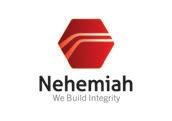

C has three years from 2010 to file an action in court against D for damages.
b) C bought a house from D in 2000. In 2006, C discovered a crack which damaged the walls badly. A building report made by a consultant revealed that the cracks had occurred in 2002, two years after C moved into the house.
C has three years from 2006 to file an action in court against D for damages.
c) C bought a house from D in 2000. In 2005, C discovered a crack which damaged the walls badly. A building report made by a consultant revealed that the cracks had occurred in 2002, two years after C moved into the house.
C has three years from 2005 to file an action in court against D for damages.
Read on its own, section 6A of the Limitation Act is wide enough to cover all instances of negligence involving injury. However there are some limitations to this new section 6A.
The explanatory statement in the Bill initially states that the provision is intended “to enable a person to take action founded in negligence not involving personal injuries by allowing an extended limitation period of three years from the date of knowledge of the person having the cause of action.”
However, it then goes on to explain that the provision “considers negligence cases involving latent damage in construction cases, where the damage was not discoverable through general inspection …”
From the above statement, it appears that Parliament intends for section 6A to apply only to latent damage in construction cases. There are two grounds to support this contention.
First, according to the Minister’s statement in the Hansard of 4 April 2018, section 6A “would permit a plaintiff to take action based on negligence involving latent damage in construction cases by extending the limitation period by three years…”


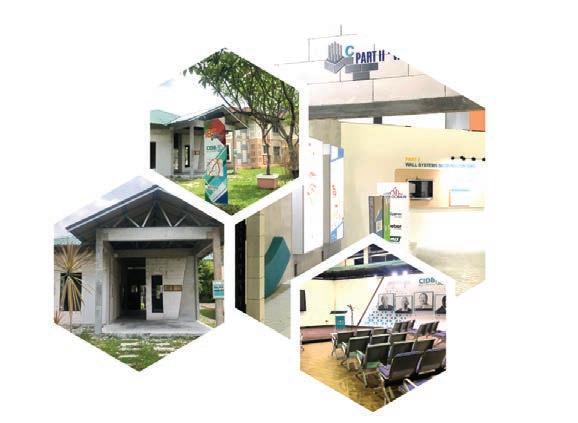
Second, all three illustrations provided in section 6A(2) to describe the operation of certain sub-sections, are premised on construction cases.
Therefore it remains to be seen whether the Malaysian Courts will apply section 6A to negligence cases which do not involve latent defects in construction cases.
Section 6A(3) provides as follows: “Notwithstanding subsection (2), no action shall be brought after the expiration of 15 years from the date on which the cause of action accrued.”
Therefore section 6A(3) prevents any person from instituting court proceedings more than 15 years after the cause of action accrued, even if it results in the extended limitation period being less than 3 years or even though the damage is discovered after 15 years.
The new section 6A(3) provides an illustrations to explain the operation of this section.
C bought a house from D in 2000. In 2017, C discovered a crack which damaged the walls badly. A building report made by a consultant revealed that the cracks had occurred in 2001, 1 year after C moved into the house. C could not commence an action because he had already exceeded the 15-year limitation period.
Therefore, an engineer’s liability under tort of negligence involving injury is now limited to a longstop of 15 years. He does not have to worry about a stale claim brought against him 15 years or more from the date he designed the project. With this amendment, Malaysia is now in line with the jurisprudence in Singapore and United Kingdom on this issue.


"NOTE - the amendment of the Limitation act has been announced by the Minister that it shall take effect from 1st September 2019."













































































Approved CPD : 12.0



Venue : Wisma IEM








2-Day Course on “Concept & Design of Sprinkler System Reference to NFPA 13: 2016”
Date : 23-24 September 2019 (Monday - Tuesday)
Time : 9.00 a.m. to 5.30 p.m.
Speaker : Ir. Gary Lim Eng Hwa
2-Day Course on Geosynthetics
Date : 23-24 September 2019 (Monday - Tuesday)
Time : 9.00 a.m. to 5.30 p.m.
Venue : Four Points Hotel, Puchong
Approved CPD : 14
Speaker : Various Speakers





The Structural Reliability Assessment (SRA) methodology was developed for the design or reassessment of offshore platforms. It applies an analytical technique where the criteria for design and reassessment are derived in terms of required platform collapse strength and corresponding failure probabilities. Criteria are derived by reducing the risk to a level that is “as low as reasonably possible” in accordance with ALARP principle.
Jacket platforms are one of the most commonly used fixed platforms in Malaysia. The selection of a fixed jacket platform is based on water depth, design impact, reservoir trajectory, drilling approach and production capacity (Bai, 2003). The fixed jacket platform such as wellhead platform or satellite platform is intended for the drilling of production wells in which the design is suited for the type of drilling rig, either jack-up or tender-assisted rig. Besides, the more prominent and integrated fixed jacket platforms usually intended for house living quarters and production systems are known as central processing and production platforms.
This article will discuss the type of quantified risk assessment, wave in-deck in conjunction to subsidence met-ocean changes, an overview of Structural Reliability Analysis (SRA), pushover analysis, the Probability of Failure (POF) and procedure for SRA for fixed offshore structures.
There are 2 types of quantified risk assessment: Qualitative and quantitative risk assessments. Quantified risk assessment is in conjunction with structural reliability analysis. According to Bai (2003), qualitative is subjective prioritisation based on a specific set of basic scenario rankings. It is also a study or method to identify all possible hazards that have the potential to cause damage (David Brown & William, 2007).
Quantitative assessment is a mathematical approach and emphasises the point risk estimate and the probability of distribution which is based on the risk-based assessment (Dziubinski et al., 2006). Risk-based assessment uses design, analysis and the latest underwater and topsides inspection reports or data for reassessment. According to Spouge (1999), quantitative risk assessment is a valuable
tool in the decision-making process as it allows experts to communicate and integrate, to quantify opinions and to combine these effectively with available statistical data.
Wave-in-deck (WID) force is one of the main factors linked to structural integrity. It occurs when inundation of water affects the lowest deck (i.e. cellar deck) in which old and newly installed platform structures are affected. Many factors contribute to WID, such as seabed subsidence and the occurrence of extreme environmental conditions (Figure 1).

Subsidence
Subsidence needs to be carefully assessed during the design stage of the platform. This evaluation is essential to avoid a catastrophic incident due to conditions where the water level comes closer to the topside deck or, in other words, the loss of the air gap. Hence, there is a potential of a WID scenario at the affected platform (Amdahl & Holmas, 2016). Apart from subsidence, the air gap may also change due to the revised met-ocean criteria as the results from the use of the latest technology, gives higher accuracy compared to the previous ones (Azman, 2018).
In term of design criteria, the platform height is crucial to provide sufficient air gaps and to protect platforms from the most dangerous part of the storm. Offshore platforms can generally deal with wind and rainfall, but cresting waves can do real damage. The impact of stormy conditions

will lead to pressure in wave crests and cause WID load on the platform deck (Figure 2). The WID load can cause significant damage to the deck structures and potential to the collapse of the entire platform.
Structural reliability analysis (SRA) methods are used to comprehensively assess the effects of uncertainties in load actions, resistances and modelling of certain parts of a structure and its performance. Structural reliability analysis offers assessments at the level of structural components and the entire structural system (Efthymiou et al., 1998).


Fundamentally, structural system reliability focuses on issues such as redundancy, robustness with respect to damage and rate of inspection. Currently, the analysis method is available for efficient estimation of the reliability of common platforms under push overloadings. Structural reliability merely means the field of probabilistic analysis of structural behaviour, serviceability and safety (Abu Husain et al.,2014).
SRA is a superior approach in reliability assessment (RA), due to its extensive application. In reliability engineering, a simplified analytical procedure to evaluate the probability of failure for fixed offshore platforms subjected to extreme storm conditions, was established to assess the structural safety and to perform reliability analysis (Bea & Mortazavi, 1992). The procedure is similar to the concept of demand and supply or load and strength. Demand refers to the load model while supply refers to resistance model or strength model. SRA is used to estimate the integrity of an existing structure based on the pushover analysis (Fayazi & Aghakouchak, 2015). The component failure occurs due to several hidden potentials such as the redundancy integrity of the structure and load distribution.
The most commonly used procedure to evaluate the integrity and reliability level of an offshore platform is Global Ultimate Strength Assessment (GUSA) and Risk-Based Design & Assessment (RBDA), two domains of the structural reliability analysis being used in Malaysian waters.
Shell Global began its structural reliability analysis for offshore structure platform in the North Sea in 1999 using convolution method with the application of integrals formulation. PETRONAS developed GUSA in 2014 to evaluate and assess more than 100 ageing platforms under PCSB in Malaysian waters.
SRA is performed after the pushover analysis to approximate platform reliability. An approximate reliability measure can be established through the determination of the return period of the environmental load which the structure can withstand the (lowest) calculated Reserve Strength Ratio (RSR).




The definition of reserve strength ratio at collapse can be subjective as it can be the first “significant” peak or the highest peak of the load-deformation curve. Currently (Figure 3), it is recommended to use the highest peak of the loaddeformation curve as the “collapse” reserve strength ratio (Pueksap-anan, 2010).

Probability is a degree of belief regarding the occurrence of an event, rather than the actual frequency. In contrast, the term reliability is defined as the complement of the probability of failure (POF) or precisely known as a probability of safety of the structure over a given period (Robert, 1999). POF for structural capacity can also be calculated by considering its uncertainty as determined from the nonlinear static pushover analysis that was established for probabilistic assessment of platforms under extreme wave loading (Cornell & Krawinkler, 2000;
In general, the structures are more reliable as the POF value decreases. Typically, reliability can be expressed as 1 in 100 or 1 failure in 100 events of the POF. The inverse of coefficient of variance (COV) is known as reliability in statistical terms in which the reliability increases as the COV value decreases, i.e. standard deviation decreases (Naresh, 2007). The chance of a platform collapse due to extreme storms is quantified and can be compared with other risks to

POF (Figure 4) is derived when the load distribution (base shear) is greater than the resistance distribution (RSR). Base shear and RSR derived from the pushover analysis is multiplied by a factor “bias” to obtain an accurate result as the mean value.
The nonlinear structural analysis, using modern software such as Structural Analysis Computer Software (SACS) collapse or Ultimate Strength for Offshore structural Software (USFOS), is an alternative SRA procedure to obtain the reserve strength ratio based on ultimate base shear over the design of the return period. Commonly, the nonlinear analysis is verified by a static pushover analysis or nonlinear progressive collapse analysis.
SACS is used to model and verify the selected test structures. It is widely used in the industry, especially for fixed template offshore structures. It is capable of performing linear static analysis and comes with several code checks such as ISO (2007), API (2000) and NORSOK standard.
The USFOS computer package is used to perform the non-linear pushover analysis, which is widely adopted by the industry. Its capabilities include the modelling of non-linear element behaviour, non-linear material properties and plastic joint behaviour. At every load level, USFOS is able to calculate platform stiffness based on updated geometry.
SESAM software is used for modelling and wave load generation purposes. The software is suitable to be adopted in offshore structural designs such as fixed offshore structures and floating structures. Finite Element (FE) method has been adopted by the software, which is based on the displacement formulation. The software consists of several modules.
The analysis starts with test structures design data and model verification, followed by a conditional assessment of loads and resistance specific to each test structures, model and data analysis and conversion to SESAM GeniE for verification checks with SACS and pushover using USFOS. SRA is applied and reserve strength ratio, base shear and the probability of failure are calculated at the end of the analysis. Figure 5 shows the overall procedure.

Step 3: Model Analysis in SESAM (GeniE) - SESTRA for gravity load, WAJAC for hydrodynamic load
Step 4: Model Result from USFOS - reserve strength ratio, base shear, mode of failure
Step 5: Structural Reliability Analysisprobability of failure and return period, extreme water level and wave in-deck
Step 1: Design Level - inplace, fatigue, dynamic
Step 2: Conditional Assessmentunderwater inspection report, metocean data, soil data

The concept of demand and supply or load and strength has been utilised through a simplified analytical procedure to evaluate the probability of failure for fixed offshore platforms subjected to extreme storm conditions. A probabilistic model is a combination of load model and strength model. Nonlinear analysis using USFOS is a method for determining the reserve strength ratio and type of failure. The methods allow estimating the duration period for an offshore structure platform to withstand the loading despite its current condition.
The effect of the probability of failure result is based on the experienced wave (several) which is subjected to the increment in wave heights. The structures with a loading exceeding the design prescribed return period (i.e., 100 years, 1,000 years and 10,000 years) can minimise the probability value up to model level with no gross error. The accuracy and effectiveness of this approach will assist the industry, especially operators, in decision-making and, more specifically, for outlining of action items as part of the business risk management.
[1] Abu Husain, MK, Mohd Zaki, NI, Mallahzadeh, H and Najafian, G (2014), "Short-term Probability Distribution of the Extreme Values of Offshore Structural Response by an Efficient Time Simulation Technique". Ships and Offihore Structures Journal, l0, pp, 1-12.
[2] Amdal, J. and Holmas, T. (2016). “ISUM for Offshore Frame Structures”. Busan, South Korea: Proceeding of the ASME 2016 35th International Conference on Ocean, Offshore and Arctic Engineering (OMAE).
[3] Azman, N. (2018). “Structural Integrity of Fixed Offshore Platforms by Incorporating Wave in-Deck Load”. Universiti Teknologi Malaysia, Kuala Kumpur, Master of philosophy.
[4] Bai, Y. (2003). “Marine Structural Design”. Houston, USA: Elsevier Ltd.
[5] Bea, R. G. and Mortazavi, M. (1992). “Experimental Validation of ULSEA with Results from Frame Test”s. Honolulu, Hawaii: 7th International Offshore and Polar Engineering Conference (ISOPE).
[10] Fayazi, A. and Aghakouchak, A. (2015). “Reliability Based Assessment of Existing Fixed Offshore Platforms Located in the Persian Gul”f. Tarbiat Modares University: International Journal Maritime Technology.
[11] Jalayer, F. (203). “Direct Probabilistic Analysis; Implementing Non-Linear Dynamic Assessment”. Stanford University: Ph.D. Thesis (CA, 244).
[12] Manuel, L., Schmucker, D. G., Cornell, C. A. and Carballo, J. C. (1998). “A Reliability-Based Design Format for Jacket Platforms Under Wave Loads”. Marine Structures Vol. 11; 413-428.
[13] Moehle, J. P. and Deierlein, G. G. (2004). “A Framework Methodology for Performance Based Earthquake Engineering”. Vancouver, Canada: 13th World Conference on Earthquake Engineering.
[14] Naresh, C. S. (2007). “LRFD for Substructures Concept of failure and Reliability Index”.Canada: NCS Consultant, LLC: #01-0607-RO
[15] Pueksap-anan, P. (2010). “Sensitivity Study for RSR of Fixed Offshore Steel Type Platforms”, Asian Institute of Technology, Thailand: Msc Thesis
[16] Robert, E. M. (1999). “Structural Reliability Analysis and Prediction”. University Textbook. England: British Library Cataloguing in Publication Data.
[17] Spouge, J. (1999). “A Guide to Quantitative Risk Assessment for Offshore Installation”. Norway: The Centre for Marine and Petroleum Technology.
Dr Ezanizam bin Mat Soom has 18 years’ experience in the oil and gas industry. He is the offshore senior structural engineer at Sarawak Shell Berhad.
Dr Mohd Khairi bin Abu Husain is senior lecturer at Universiti Teknologi Malaysia, specialising in offshore structure modelling, hydrodynamic wave loading, wave mechanics and renewable energy.
Dr Noor Irza binti Mohd Zaki is senior lecturer at Universiti Teknologi Malaysia, specialising in ocean engineering, offshore structure modelling, hydrodynamic wave loading, wave mechanics and renewable energy.
Nurul Uyun binti Azman has 14 years’ experience in the oil and gas industry. Currently pursuing her PhD at Universiti Teknologi Malaysia, she is also senior structural engineer at Brunei Shell Petroleum.

[6] Cornell, C. A. and Krawinkler, H. (2000). “Progress and Challenges in Seismic Performance Assessment”. PEER Center News.




























[7] David Brown, F. and William Dun, E. (2007). “Application of Quantitative Risk Assessment Methodn to Emergency Response. Computers and Operations Research, 34, 1243-1265





[8] Dziubinski, M., Fratczak, M. and Markowski, AS. (2006). “Aspect of Risk Analysis Associated with Major Failures of Fuel Pipeliness”. Journal of Loss Prevention in the Process Industries, 19, 399-400.
[9] Efthymiou, M., Wee, T. Y., Forristall, G. Z. and Graham, C. G. (1998). “Structural Integrity of the Forcados CLP Offshore Nigeria. EP 987-5686, Nigeria, Shell






































1-Day Seminar on “Performance Evaluation for Concrete to Concrete Connection: From Qualification to Design”
Date :24 September 2019 (Tuesday)
Time :9.00 a.m. to 5.30 p.m.
Venue :Wisma IEM
Approved CPD:6.0
Speaker:Dr Daniel Looi Ting Wee, Ir. Ng Beng Hooi & Ir. Mun Yew Fai
One of the nation’s oldest post boxes is located in Jalan Tuanku Yahya Petra, Penang Hill (833m above sea level). The cylindrical shaped, cast iron post box is 1m tall and 180mm in diameter.
It dates back to British colonial times and has a royal VR insignia on it which stands for Victoria Regina (Queen Victoria). It was made in the United Kingdom by Andrew Handyside & Co. Ltd. during the reign of Queen Victoria (1819-1901).
The first cylindrical post box was manufactured during this period and naturally, Penang, being a British Straits Settlement, also used such a post box. Originally the post box was located near the fire brigade station in Beach Street before Pos Malaysia decided to present it to the Penang Hill Residents Association in 2005.
Although it is now 200 years old, the post box still functions. There are a few similar post boxes located in different parts of the country and each carries a royal insignia coinciding with the reigning king or queen. For example, VR (reign of Queen Victoria), EVIIR (King Edward VII), GR (King George V) and EVIIIR (King Edward VIII).















reported by

The Tunnelling & Underground Space Technical Division (TUSTD) organised two technical site visits to the Klang Valley Mass Rapid Transit Project, Sungai Buloh-Serdang Putrajaya (SSP) Line to allow IEM members to see the challenges faced in deep excavations and the solutions adopted in the construction of the underground metro.
The visits included taking a look at deep excavations from viewing platforms as well as at surface plants and facilities used in tunnelling works.
The first visit on 28 March, 2019, comprising 18 participants, was to Bandar Malaysia North site. Upon arrival at the site office, the visitors attended a technical presentation conducted by a team of engineers from MMC-Gamuda KVMRT (T) Sdn. Bhd. They were briefed on the capabilities of the Variable Density Tunnel Boring Machine (TBM), an award-winning innovation developed by MMC-Gamuda KVMRT (T) Sdn. Bhd., in collaboration with TBM manufacturer Herrenknecht, for mining in karstic
limestone conditions of Kuala Lumpur.
The team explained the challenges faced in the deep excavation at 28m below ground level (bgl) at the Bandar Malaysia North site. Secant bored piles of different diameters were constructed down to rockheads of varying depths as a retaining wall. The need to use a heavy lifting crane to lower the TBM into the launching shaft site and the logistic constraints in relation to the retaining system were highlighted.
After the technical briefing and a safety briefing, we visited the TBM control room, where measurements from the geotechnical instrumentation near the TBM position and feedbacks from the TBM sensors could be viewed in real time on a large display screen. An auto-steering function, which had been configured into the TBM, was also introduced and presented. The participants were then led to a viewing platform to look at the deep excavation where a station is being constructed.
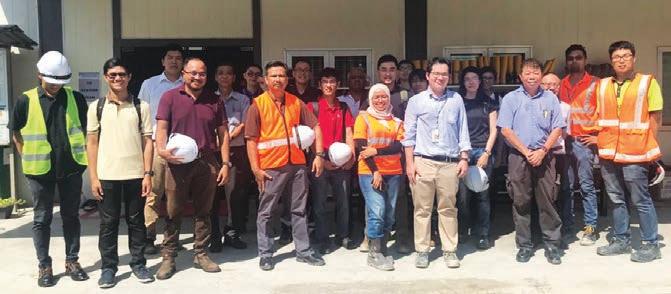
There were 20 participants for the second visit on 29 April, 2019, to the Chan Sow Lin Station site. The challenges faced in the deep excavation of 40m bgl for construction of the station were described: Careful rock face mappings had to be carried out to enable excavation of shear keys to resist uplift water pressures upon completion of the permanent structure. The face mappings at different elevations of the rock face had to be reconciled to identify the presence of persistent fractures which formed a non-favourable wedge. Depending on the fracture properties, alternative solutions such as using tension piles, were explored.
After a safety briefing, the participants visited the surface plants such as compressed air plant, water tank, centrifuge and slurry treatment plant. Short explanations were given by the tunnel engineers. Then the participants went to a viewing platform to watch the pulling-through of the TBM which was launched from Bandar Malaysia North site. It was pulled across the deep excavation at Chan Sow Lin Station site and re-launched at the opposite face.
The construction of a long TBM network has enabled MMC-Gamuda KVMRT (T) Sdn. Bhd. to efficiently manage the construction programmes of both station sites with respect to excavation and tunnelling works, by selecting strategic shafts or stations for launching, and others for boring or pulling-through and finally, for retrieval.
A notice inviting nominations for the Election of Council Members for Session 2019/2020 would be posted on the IEM Notice Board and IEM website from 16 November 2019 for the information of all Corporate Members of IEM. Thereafter, following the close of nominations on 11 December 2019, the election exercise will proceed. All Corporate Members residing overseas are requested to take note of the requirements of the Bylaw, Section 5.12, as shown below.
The voting paper shall, not less than twenty eight (28) clear days before the date of the Annual General Meeting, be sent by post to all Corporate Members residing in Malaysia and to any other Corporate Members who may, in writing, request to have the paper forwarded to him. The voting paper shall be returned to the Honorary Secretary in a sealed envelope so as to reach him by a specified date not less than seven (7) days before the Annual General Meeting.
Voting papers will be posted out by 20 February 2020
Any Corporate Members residing outside Malaysia, who wish to receive voting papers, are advised to write to the Honorary Secretary on or before 10 January 2020
Thank you.
Election Officer, IEM





Nehemiah-OVM provides the following products and services:
- Post-tensioning solution provider - Carpark Flat Slab - Transfer Plate
- Beams, Box Girders
- Alternative design solutions
- Cable systems (stay cable, main cable, hanger)
- Bridge bearing and expansion joint
- Construction solutions (heavy lifting, ILM, etc)
- Monitoring repairing and strengthening for structures






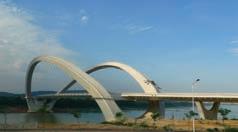



Congratulations to the following recipients for the Awards received during the 81st birthday of Penang Yang di–Pertua Negeri, Tun Abdul Rahman Abbas on 17 July 2019:
Ir. Yau Ann Nian Darjah Johan Negeri (DJN) Award
Ir. Tiu Jon Hui Pingat Jasa Kebaktian (PJK) Award
Ir. Dr Leo Choe Peng Bintang Cemerlang Negeri (BCN) Award
Y.Bhg. Dato’ Ir. Dr Goh Teik Cheong Darjah Setia Pangkuan Negeri (DSPN) Award
Congratulations to Y.Bhg. Dato' Ir. Haji Abdullah bin Isnin for the conferment award “Darjah Setia Pangkuan Negeri (DSPN)“ from Jabatan Pengairan dan Saliran Malaysia – Department of Irrigation and Drainage effective 8 July 2019.
Congratulations to the following recipients for the Promotion Titles from Jabatan Pengairan dan Saliran Malaysia – Department of Irrigation and Drainage effective 8 July 2019:
• Y.Bhg. Dato' Ir. Hj. Nor Hisham bin Mohd. Ghazali: Timbalan Ketua Pengarah Sektor Bisnes
• Y.Bhg. Dato' Ir. Sabri bin Abdul Mulok: Timbalan Ketua Pengarah Sektor Pakar
• Y.Bhg. Dato' Ir. Mohd Azmi bin Ismail: Pengarah Pengurusan Sumber Air dan Hidrologi

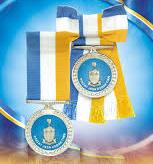
• Ir. Azmi bin Ibrahim: Pengarah Kanan Sektor Pengurusan
• Ir. Norizan binti Abdul Aziz: Pengarah Pengurusan Banjir
PELAKSANAAN SISTEM OSC 3 PLUS ONLINE




BAGI URUSAN PENGEMUKAAN PELAN PEMAJUAN BAGI PROJEK-PROJEK BARU
Melalui Edaran Surat Rujukan : JKT.T.800-3/1/4 Jld. 2 (12) bertarikh 4 Julai 2019
Jabatan Kerajaan Tempatan di Kementerian Perumahan dan Kerajaan Tempatan (KPKT) telah membangunkan Sistem OSC 3 Plus Online dengan kerjasama pihak MAMPU, Lembaga Pembangunan Industri Pembinaan Malaysia (CIDB) dan Perbadanan Putrajaya (PPj) bagi tujuan memudahkan urusan Pengemukaan Pelan Pamajuan, Sesi Go Live Sistem OSC 3 Plus Online telah diadakan pada 28 Jun 2019.
Sehubungan dengan itu, 9 Pihak Berkuasa Tempatan (PBT) rintis yang telah dikenalpasti bagi pelaksanaan fasa 1 sebelum sistem ini diperluaskan pelaksanaannya ke seluruh PBT di Semenanjung Malaysia adalah:
1. Majlis Bandaraya Ipoh 6. Majlis Perbandaran Batu Pahat
2. Majlis Bandaraya Alor Setar
3. Majlis Perbandaran Kajang
7. Majlis Perbandaran Kuantan
8. Majlis Perbandaran Dungun; dan
4. Majlis Perbandaran Subang Jaya 9. Majlis Daerah Rembau
5. Majlis Perbandaran Nilai
Bagi melancarkan sistem ini, adalah dimaklumkan bermula 1 Julai 2019, semua urusan Pengemukaan Pelan Pemajuan bagi projek-projek baharu WAJIB dilaksanakan secara atas talian menggunakan Sistem OSC 3 Plus Online.
Pasukan Projek Sistem OSC 3 Plus Online akan terus memantau keupayaan kelancaran dan keberkesanan sistem. Bagi sebarang kemusykilan, Y.Bhg. Datuk/Dato’/Tuan/Puan boleh menghubungi pegawai-pegawai KPKT seperti berikut: Sekian, terima kasih.
Encik Noriman bin Muhammad noriman@kpkt.gov.my 03-8891 3427
Encik Muhamad Shukri bin Ramli shukriramli@kpkt.gov.my 03-8891 3999
reported by

IEM’s Tunnelling and Underground Space Technical Division (TUSTD) and Geotechnical Engineering Technical Division (GETD) co-organised an evening talk on Geotechnical Impact Assessments Due To Underground Tunnelling at the Tan Sri Professor Chin Fung Kee Auditorium in Wisma IEM, Petaling Jaya, on 2 May, 2019, at 5.30 p.m. There were 65 participants.
There are huge challenges in tunnelling, including its impact on surrounding structures. As such, potential damages and the need for protective works must be assessed before construction work begins.
Dr Boon Chia Weng, senior Geotechnical Engineer with MMC-Gamuda KVMRT (T) Sdn. Bhd., had represented Malaysia at the IEM-CIE-HKIE Tripartite Seminar 2018 on 4 September, 2018, and spoke on Geotechnical Challenges in Infrastructure & Transportation Projects.
He started the talk by describing the impact to structures with shallow foundations using the work of Burland & Worth (1969) and Boscardin & Cording (1989), in which bending strains and diagonal strains were calculated based on predicted ground settlement profiles. He also highlighted that most cracks were affected by the presence of openings within existing structures.
Using as example a structure on raft foundation, Dr Boon pointed out that 2 methods can be adopted, using Finite Element Analysis (FEA), to model the influence of tunnelling on surrounding structures. These are internal-pressurereduction and contraction through volumetric strains. For structures on spread footings, a simplified method of using an equivalent beam and discrete springs at the foundation support was discussed. This method takes into account localised settlements which may occur in the Kuala Lumpur Limestone Formation.
For structures with piled foundation, there are two common methods of assessment:
1. Stress-based to calculate the reduction in geotechnical capacity.
2. Greenfield settlements can be obtained and ground deformations can be assigned as input to another software to calculate the pile vertical response due to the loss in mobilised resistance.
Axial responses of piles due to tunnelling works can be predicted following the procedures in Boon & Ooi (2016)

using load transfer t-z and q-z analyses. The implication of downdrag or negative skin friction can be estimated, based on the pile location in relation to the influence zone of tunnelling works. Dr Boon also presented another scenario where the observational approach was adopted during the excavation of a station box that accommodated the boring-through of two Tunnel Boring Machines. Based on his experiences, a few considerations were of notable importance with respect to working with the design-andbuild contractor in the Klang Valley Mass Rapid Transit (KVMRT) Project, Sungai-Buloh Kajang (SBK) Line. These considerations were:
• Impact on retaining wall.
• Building damage assessment.
• Impact on tunnel rings (both structural & geotechnical).
• Instrumentation and monitoring.
• Glass Fibre Reinforced Polymer (GFRP) at the softeyes.
• Alignment impact.
• Programme impact.
InfLuence of TunneL BoRe-ThRough on WaLL DefLecTIons
With reference to the observation, the influence of tunnelling work, with the assumption of 1% volume loss in FEA, it was































observed that 14mm of additional deformation of the diaphragm wall was obtained when tunnelling successfully bored through the station box.
This finding suggested that the impact should not be neglected accordingly in practice. The interaction between the tunnel lining and diaphragm wall was considered.
The convergence and heaving measurements of the upper tunnel, obtained through optical prisms, were studied to enable more optimal design procedures to be adopted for the lower tunnel; 60% backfilling on the lower tunnel was adopted to limit the structural deformations of the tunnel linings, as well as to eliminate potential buoyancy considerations. In practice, the latter depended on seepage and permeability of the ground, although it













































1-Day Seminar on “Passive Fire Protection to Steel Buildings & Convention Centres, and The Challenges and Solutions in Building Envelope Waterproofing”
Date :26 September 2019 (Thursday)
Time :9.00 a.m. to 5.30 p.m.
Venue :Armada Hotel, PJ
Approved CPD:6.0
Speaker:Mr. Scott Whitelaw & Mr. Joe Ho
1-Day Technical Seminar on “Lightning and Surge Protection and Power Quality & Realibility”
Date :30 September 2019 (Monday)
Time :9.00 a.m. to 5.30 p.m.
Venue :Wisma IEM
Approved CPD:7.0
Speaker:Er. Professor Dr Lock Kai Sang
SIZE: 21CM (W) X 13CM (H)







(All illustrations and photographs in this report courtesy of PAAB and CSRK)

T• Pipe Size : 2.5m dia.
• Total Length : 13.0 km.
• Current Site Progress:
a) Schedule : 77.64%
b) Actual : 47.80%
he Tunnelling & Underground Space Technical Division (TUSTD of IEM organised a technical site visit to Sg. Besi tunnel on 29 June, 2019, with 11 participants. The group left Bangunan Ingenieur, Petaling Jaya, at 8.30 a.m. and arrived at the project site office in Damai Perdana, Cheras at 9.10 a.m., where they were welcomed by Puan Nurhaidah binti Jamil, project manager from the developer, Pengurusan Aset Air Berhad (PAAB).
Puan Nurhaidah said the Consultant is a consortium of consulting engineers comprising SMHB Sdn. Bhd., Ranhill Consulting Sdn. Bhd. and KTA Tenaga Sdn. Bhd. (CSRK). The main contractor is Pembinaan Ikhasas-Merak Sdn. Bhd. (PIMSB). After a self-introduction session, two videos were presented on PAAB and Langat 2.
Hj. Zariffuddin bin Othman, project executive of PAAB, then gave a slides presentation on the overall water supply scheme, comprising Pahang-Selangor Raw Water Transfer
Tunnel and Langat 2 Projects, followed by Cik Noordini binti Ahmad, assistant RE of CSRK, with a slides presentation on Package 10 (Figure 1), Sg. Besi Tunnel.
Sg. Besi Tunnel is located between Taman Desa Cheras and Sg. Besi Army Camp, crossing a hill from east to west. Besides the tunnel, there are also inlet and outlet portals (Figure 2).


Based on Current Tunnel Excavation
Soil & Extremely Poor Rock : 11.70 m(CH. 20.6 to CH. 8.9)
Good Quality Rock : 201.00 m
(CH. 210 to CH. 8.9)
Good Quality Rock : Q > 0.01
Extremely Poor Rock : Q > 0.01
GOOD QUALITY ROCK
FIBRES REINFORCED SHOTCRETE LINING 100 THK
EXTREMELY POOR ROCK TUNNEL ENTRANCE/ EARTHLIKE MATERIALS
FIBRES REINFORCED SHOTCRETE LINING 300 THK
C35/20 REINFORCED CONCRETE BASE SLAB
Q>0.01
C35/20 REINFORCED CONCRETE BASE SLAB
FIBRES REINFORCED SHOTCRETE LINING 300 THK

The tunnel is being constructed using the conventional “drill and blast” method. It is of a modified horseshoe shape measuring 527m in length. The heights at both rock and soil faces are 5.78m and 6.28m respectively while the span/width at both rock and soil faces are 7.54m and 8.54m respectively with sectional area of 44 sq m. For good quality rock face, the construction method is of full face “drill and blast”, while for both poor quality rock and earth-like material (soil) face, the method comprises of top heading and bottom benching.
Based on site investigations with both geophysical and boreholes data, the sub-surface along the tunnel alignment (Figure 3) indicates that the tunnel, with maximum 80m overburden, is considered to be a shallow tunnel. Current tunnel excavation progress is indicated in Figure 3. The classification of rock quality is based on Q value, for good quality rock, Q > 0.01 and for extremely poor
ROCK (vary depend on rock quality)
PATTERN ROCK DOWEL (3m)
ADDITIONAL DOWEL OR TENSION ROCK BOLT L = 3m OR 4m
100 THICK FIBRES REINFORCED SHOTCRETE
DRAINAGE HOLE (2m) RELEASE HOLE

TUNNEL ENTRANCE / ARTHLIKE MATERIALS
DRAINAGE HOLE (2m)
DRAINAGE HOLE (2m)
150 THICK REINFORCED CONC. SLAB
FIBRES REINFORCED SHOTCRETE 300mm THK
STEEL RIB 150x150
TEMPORARY INVERT AS REQUIRED

The principal of a long-established Environmental Engineering Company in Malaysia is seeking to divest his shareholding. The company has extensive experience in sewage treatment, air and water pollution control and treatment, solid waste handling and ancillary turnkey projects related to the reduction of environmental pollution. The principal is seeking a gradual divestment. Return of investment projected to be within four years. Interested parties are invited to discuss particulars by contacting the principal via Phone/WhatsApp at +6012 383 0564.
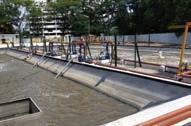
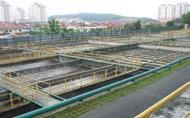







quality rock, Q < 0.01. The Q value at each tunnel face is derived based on face mapping after each blasting operation.
The construction of the lined tunnel (Figure 4) is based on the Q value. For Q > 0.01, the fibre reinforced shotcrete lining is 100mm thick and for Q < 0.01 as well as for soil face, the fibre shotcrete lining is 300mm thick.
Typical tunnel supports are either rock dowels or forepoles umbrella (Figures 5a & 5b). Rock dowels are installed using jackhammer (Figure 6), followed by grouting of the installed dowels. The pattern of the rock dowels is also based on the Q value, as shown in construction drawings. However, any additional rock dowel required is based on site condition. See Figure 7 for a completed fibre reinforced shotcrete lined rock face. note



For soil face, the pre-support is 12m long, 76mm diameter forepoles umbrella at 300mm centres. The 5 stages of construction in extremely poor rock and soil faces are:
1. Installation of forepoles umbrella including grouting
2. Excavate under the forepoles umbrella
3. Installation of steel ribs
4. Shotcreting
5. Installation of friction bolts.
A contiguous bored piles (CBP) wall was designed and installed along one side of the inlet portal (Figures 8 & 9) due to unusual groundwater source encountered at the bottom of the portal slope. Soil nailing was also designed and installed at both portals (Figures 8 & 9) for slopes stabilisation.
The monitoring aspects (Figure 10) of the inlet portal and tunnel construction are:
• Before construction – dilapidation survey on all buildings within the vicinity of the tunnel site.

After the technical briefing was a briefing on Health & Safety in Tunnel Construction. The participants raised many pertinent questions that were addressed by representatives from PAAB, CSRK, main contractor and subcontractor on site. At the end of the tunnel face, a set of explosives was in place at the rock face ready for a blasting operation. The explosives were installed to a horizontal depth of 3m in a specific configuration/pattern to allow split second interval detonations in succession to yield maximum rock breakage.
After the tunnel visit, all participants and personnel exited the tunnel for a group photograph. The highlight of the site visit was the much-anticipated blasting operation.
After the visit, the group returned to the project site office where session chairman Ir. Chong Chi Koong started the Q&A session. Then, he thanked the hosts, saying that the site visit was very beneficial to the participants who not only learnt both the design and construction aspects of the Sg. Besi Tunnel but also about PAAB and Langat 2.
The visit concluded with Ir. Chong presenting IEM plaques to Hj. Zariffuddin, Cik Noordini and En. Mohd Yusoff bin Ramly, project engineer of PIMSB. Hj. Zariffiddin then thanked the participants for visiting and presented them with PAAB souvenirs. This was followed by a hearty lunch hosted by the project team. The group left the project site office and arrived at Bangunan Ingenieur, Petaling Jaya at 1.30 p.m.



















• During construction – crackmeters at surrounding buildings, settlement markers at surrounding areas and optical targets on portal slopes.


























• Inside tunnel – optical targets at 60m centres for convergence monitoring of tunnel soffit settlement.
• During blasting – vibrometers to monitor vibration in Peak Particle Velocity (PPV) and loudness in decibels (dB). Limits of Jabatan Mineral & Geosains (JMG) for PPV is 3 mm/sec. and loudness is 120 dB.
In general, all instrumentation locations are at surrounding areas and buildings within a 100m radius of the inlet portal site as indicated in the figure.






























1-Day Workshop on “Conceptual Design of Structures”
Date :2 October 2019 (Wednesday)
Time :9.00 a.m. to 5.30 p.m.
Venue :Armada Hotel, PJ
Approved CPD:6.5
Speaker:Mr. Rajavel Inbarajan
1-Day Technical Course on “The Potential Tertiary Commercial-Scale Plants Using Palm Oil Mill By-Products. How Feasible, Variable & Viable? Sustainable?”
Date :5 October 2019 (Saturday)
Time :9.00 a.m. to 5.30 p.m.
Venue :Wisma IEM
Approved CPD:7
Speaker:Ir. Hor Kok Luen

The Malaysian Insurance Institute (MII) and The Institution of Engineers Malaysia (IEM Sabah Branch) organised a two-day workshop on Construction Projects in Sabah (Focus on Risk and Insurance) at Hotel Horizon, Kota Kinabalu, Sabah on 27-28 February, 2019.
The participants were mainly from the insurance and engineering industry in the state but there were a few who had travelled from Kuching and Kuala Lumpur to attend this inaugural MII-IEM collaboration in Sabah. Besides insurance and broking company employees, there were engineers and risk management personnel from related engineering industries who wanted to learn more about this topic.
The course was put together to share and enhance knowledge on construction insurance. As a standard construction industry contract requirement, contractors must procure the Contractors All Risks (C.A.R) insurance before commencing work. This covers project work and third party claims (such as damage to neighbouring buildings).
MII, an education provider/training centre for the insurance industry, was pleased to work with IEM (Sabah Branch) to make the event a success.
The workshop was led by Ir. Pooba Mahalingam (Director of Talent Asia Training & Consulting), an experienced risk engineer based in Singapore, who shared his knowledge and expertise in the project risk and insurance field.
IEM Sabah Branch Chairman Ir. James Yong, a lead consultant for the Pan Borneo Highway project) spoke on the need for risk management in construction projects. There were 2 guest speakers: Ir. Felix Ku, Senior Engineer of DHI Water & Environment (M) Sdn. Bhd., and Mr. Arthur Wong, Operations Manager/Senior Forensic Consultant of Approved Forensic Sdn. Bhd.
During the session, participants were enlightened on the following:
• Policy coverage and clauses
• Endorsements
• How to deal with C.A.R claims
• Case studies
• Construction technology and method of work
• Upcoming projects in Sabah
• Flood issues and flood mitigation related projects in Sabah
• Forensic engineering aspects
















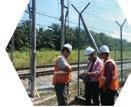











EIr. Chin Mee Poon is a retired civil engineer who derives a great deal of joy and satisfaction from travelling to different parts of the globe, capturing fascinating insights of the places and people he encounters and sharing his experiences with others through his photographs and writing.
l Chalten is a village of less than 2,000 people in southern Argentina. Situated in a broad valley, this small place has only two main streets and a few side streets. The main streets are lined with hotels, guest houses, restaurants and tour operators. El Chalten is known as the Trekking Capital of Argentina and thousands of people come here every summer to explore the northern part of Parque Nacional Los Glaciares.
Established on 11 May, 1937, with an area of about 727,000 hectares in the Argentina side of Patagonia, Los Glaciares National Park is a region of exceptional natural beauty, with rugged, towering mountains in the north and a vast ice cap, numerous glaciers and glacial lakes in the south. The park was included in UNESCO’s list of world heritage sites in 1981. The mountainous north and the icy south are not connected by trails and they appear to be two distinct national parks.
My wife and I, together with my two younger brothers and their wives, came to El Chalten in March this year by night bus and we put up 3 nights in this colourful village.
a spectacular view of the snow-capped peaks. From there on, it was generally level through a beautiful lenga (beech) forest. We reached Laguna Torre, a glacial lake in front of the saw-tooth peaks, after 3 hours and 50 minutes of pleasant walking, and we spent an hour there enjoying our picnic and feasting our eyes.
We decided to give our legs a rest on day two by joining a cruise in Lago del Desierto, a 14km long x 2km wide lake, 37km north of El Chalten, close to the Chilean border. It was in front of the cruise operator’s office that I met my varsity mate, Hon, and his wife. They had come to El Chalten with a tour group. Hon is also an avid traveller and photographer. We travelled in a large van to the southern tip of the lake. On the way we had a superb view of Fitz Roy, the majestic peak we would be trekking to on day three. The cruise turned out to be a pleasure, with Fitz Roy and Gran Glaciar Vespignani accompanying us all the while. We even had time to trek to a point close to the glacier.

All of us were keen trekkers with many years of experience and we came to El Chalten with a strong desire to appreciate the natural beauty of Los Glaciares National Park by trekking into the mountains. El Chalten is right at the threshold of the northern part of the national park and 10 trekking trails are within easy reach from the village.
We were blessed with a sunny day and clear skies on day one in El Chalten. This was a good time to do the Laguna Torre trek as the tower-like peaks were usually shrouded by clouds. So, after our wives had prepared a packed lunch, we set out for the 9km long trail at 9.45 a.m.
It was a steep ascent initially, followed by alternating flats and gentle climbs. A view point at the 2.5km mark offered us
On our last day in El Chalten, we trekked to Fitz Roy. Three of us started from the trail head at the north-western end of the village, and the other three began the trek from a point 13km along the road to Lago del Desierto. I was in the first group. Initially, it was a long ascent along a river. Then we went through a lenga forest and had a rest beside a small lake. The gently undulating trail led us to a point where we met up with the other group.
After the 8km mark and a large campsite, my brothers and I pushed ahead for the gruelling climb up a steep rocky slope to Laguna de los Tres for a close view of Fitz Roy, while our wives started their descent. The climb was a severe test of my endurance and determination. I eventually made it to the glacial lake, but I was thoroughly exhausted.
Septuagenarians like I should be contented with trekking for pleasure rather than going all out as if trying to prove something, shouldn’t we?






Kepada Semua Ahli,
Tarikh: 16 Ogos 2019
MENDUDUKI TEMUDUGA PROFESIONAL TAHUN 2019
Berikut adalah senarai calon yang layak untuk menduduki Temuduga Profesional bagi tahun 2019.
Mengikut Undang-Undang Kecil IEM, Seksyen 3.8, nama-nama seperti tersenarai berikut diterbitkan sebagai calon-calon yang layak untuk menjadi Ahli Institusi, dengan syarat bahawa mereka lulus Temuduga Profesional tahun 2019.
Sekiranya terdapat Ahli Korporat yang mempunyai bantahan terhadap mana-mana calon yang didapati tidak sesuai untuk menduduki Temuduga Profesional, surat bantahan boleh dikemukakan kepada Setiausaha Kehormat, IEM. Surat bantahan hendaklah dikemukakan sebulan dari tarikh penerbitan dikeluarkan.
Ir. Mohd Khir bin Muhammad FIEM, PEng Setiausaha Kehormat, IEM (Sessi 2019/2020)
PERMOHONAN BARU
Nama Kelayakan
KEJURUTERAAN AWAM
KHO TENG TENG BE HONS (UTM) (CIVIL, 2005)
MOHD KHAIROUL NIEZAM BIN ZAINON KAMARUDIN BE HONS (UTHM) (CIVIL, 2009)
SUZANA BINTI RAMLI BE HONS (UiTM) (CIVIL, 2001) MSc (STUTTGART) (WATER RESOURCES ENGINEERING & MANAGEMENT, 2004) PhD (UiTM) (2015)
WONG KEE LUEN BE HONS (UNITEN) (CIVIL, 2006)
KEJURUTERAAN ELEKTRIKAL
JAYVARMAA A/L RAJARAM BE HONS (UTP) (ELECTRICAL & ELECTRONICS, 2014)
LEE TIAN GIAP BE HONS (HERTFORDSHIRE) (ELECTRICAL & ELECTRONIC, 1997)
KEJURUTERAAN MEKANIKAL
TAN YEK GUANG, CLIFFORD BE HONS (UTAR) (MECHANICAL, 2010)
KEJURUTERAAN PEMBUATAN
MUHAMMAD FUAD BIN HJ MOHAMED ZAN BE HONS (UTeM) (MANUFACTURING-MANUFACTURING MANAGEMENT, 2011)
PERMOHONAN BARU / PERPINDAHAN MENJADI AHLI KORPORAT Nama Kelayakan
KEJURUTERAAN AWAM
AZMI BIN ALADDIN @ ALLADIN BE HONS (PORTSMOUTH) (CIVIL, 1997)
MOHAMED BIN DAUD BSc HONS (LOUGHBOROUGH UNIVERSITY OF TECHNOLOGY) (CIVIL, 1983)
SAIFFUDDIN BIN SHEAFI BE HONS (UTM) (CIVIL, 2006)
KEJURUTERAAN ELEKTRIKAL
NAS NAWEERAH BINTI RAHIMBE HONS (UTHM) (ELECTRICAL, 2006)
PERPINDAHAN AHLI No. Ahli Nama Kelayakan
KEJURUTERAAN AWAM
104290JAUHAR NAFIS BIN JOHARIBE HONS (UiTM) (CIVIL, 2012)
14230 SOO HUA MING BE HONS (NUS) (CIVIL, 1989) MSc (NUS) (CIVIL, 1992)
KEJURUTERAAN BAHAN
58693 WAN MOHD SYAHRIR BIN WAN MOHAMAD BE HONS (USM) (MATERIALS, 2007)
KEJURUTERAAN ELEKTRIKAL
36188 YAU JIE YING BE HONS (UTM) (ELECTRICAL, 2012)
KEJURUTERAAN KOMUNIKASI
56975 ANG CHUNG HUI BE HONS (UNIMAP) (COMMUNICATION, 2014)
KEJURUTERAAN MEKANIKAL
30204 AQILAH RIFHAN BINTI AHMAD IDRISS BE HONS (UITM) (MECHANICAL, 2011)
66095 HAU WEE CHUAN BE HONS (UTAR) (MECHANICAL, 2009)
70410 KAAJENNTHIRAN A/L SEPULOH MANIAM BE HONS (UNITEN) (MECHANICAL, 2012)
59066 MOHD AL-HAFIZ BIN MOHD NAWI BE HONS (UTHM) (MECHANICAL, 2012) ME (UTHM) (MECHANICAL, 2013) PHD (TOKUSHIMA) (INTELLIGENT STRUCTURES & MECHANICS SYSTEMS, 2016)
72719 MOHD AZLAN BIN ISMAILBE HONS (UMS) (MECHANICAL, 2007) ME PRAC (WOLLONGONG) (MECHANICAL, 2009) PHD (UNIMAS) (2016)
94378 MOHD RIDZUAN BIN SUIDBE HONS (MALAYA) (MECHANICAL, 2010)
66531 MOHD RIZAL BIN LIAS BE HONS (UTHM) (MECHANICAL, 2005) PHD (UTHM) (MECHANICAL, 2017)
35727 MUHAMMAD HAFIZI BIN KAMALUDIN BE HONS (UTM) (MECHANICAL-INDUSTRIAL, 2010)
78865 NG KEAN ENG BE (MURORAN INSTITUTE OF TECHNOLOGY) (MECHANICAL SYSTEMS, 1998)ME (MURORAN INSTITUTE OF TECHNOLOGY) (MECHANICAL SYSTEMS, 2000) PHD (MURORAN INSTITUTE OF TECHNOLOGY) (2003)
88325 TEO KAI PENG ME HONS (BRISTOL) (MECHANICAL, 2013)
KEJURUTERAAN SUMBER AIR
45369 NURMIN BOLONG BE HONS (USM) (CIVIL, 1999) MSC (SOUTHAMPTON) (ENGINEERING FOR DEVELOPMENT, 2002) PHD (UTM) (CIVIL, 2010)
PERMOHONAN BARU / PERPINDAHAN MENJADI AHLI KORPORAT
No. Ahli Nama Kelayakan
KEJURUTERAAN MEKANIKAL
37531
CHEW CHIEN LYE @ MERVINBSC (UNIVERSITAT DUISBURG-ESSEN) (MECHANICAL, APR 2011) BE HONS (UKM) (MECHANICAL, SEPT 2011)
65199 CHONG KAI FENG BE HONS (MMU) (MECHANICAL, 2013)
25673 MD FAHMI BIN ABD SAMAD @ MAHMOOD BE HONS (UTM) (MECHANICAL, 2000) ME (UTM) (ENGINEERING MANAGEMENT, 2002) PHD (UTM) (MECHANICAL, 2009)
SENARAI PENDERMA KEPADA WISMA DANA BANGUNAN IEM
Institusi mengucapkan terima kasih kepada semua yang telah memberikan sumbangan kepada tabung Bangunan Wisma IEM. Ahli-ahli IEM dan pembaca yang ingin memberikan sumbangan boleh berbuat demikian dengan memuat turun borang di laman web IEM http://www.iem.org.my atau menghubungi secretariat di +603-7968 4001 / 5518 untuk maklumat lanjut. Senarai penyumbang untuk bulan Julai 2019 adalah seperti jadual di bawah:
NO.NO. AHLI NAMA


Yes! I would like to be a subscriber of The Institution of Engineers, Malaysia’s publications
Name: _________________________________________________________________________________________________________
Mailing Address: _________________________________________________________________________________________________
Company/Institution: ______________________________________________________________________________________________
Title: ____________________________________________________________________________________________________
Telephone No: _________________________ Fax: _________________________ Email: _________________________________
Please commence my subscription from: _________________________(month/year) Signature: _______________________________
To start your subscription of IEM’s publications, complete this form and mail it back to the address below. For faster processing, fax it to: +603 7493 1047. Thank you.
What is your primary job title?
Corporate Management (including chairman, president, proprietor, partner, director, vice president, general manager, division manager, import/export manager, other corporate title)
Management (including project/contract/equipment/service/transport district manager, clerk of works, other technical or operating manager)
Engineering/Design (including chief engineer, chief designer, civil/ highway/mechanical/planning engineer, other engineering/design title)
Buying/Purchasing (including chief buyer, buyer, purchasing officer, other buying/purchasing title)
Titles allied to the field (architect, consultant, surveyor, research and development professor, lecturer, supervisor, superintendent, inspector or other allied title)
Others (please specify) ____________________________
What type of organisation do you work in? (Tick one box only)
Contractor
Sub-contractor specialist
Design and build contractor
Consulting engineering/architectural/quantity surveying practice
Mining/quarrying/aggregate production company
Petroleum producer
International/national authorities
National/regional/local government
Public utilities (electricity, gas, water, deck and harbour, other)
Manufacturer
Distributor/importer/agent
Construction department of large industrial/Commercial concern
Association/education establishment/research
Construction equipment hire/rental company
Project/construction management consultancy
Others (please specify) _______________________________
What are the main activities of your organisation? (Tick all that apply)
Constructions of:
Roads/bridges
Manufacturer of:
Construction equipment
Dams/reservoirs/irrigation Cement
Harbours/offshore structures Other construction materials
Foundations/tunnels Distribution
Pipelines/refineries Construction equipment
Structures/steel work
Construction materials
Building (commercial, industrial) Hire/rental of construction equipment
Housing Design
Construction management Earth-moving/open cast mining
Deep mining Aggregate production
Others (Please specify) _________________________________________
Rate (Please tick)
RM360.00 - 12 issues of JURUTERA
RM84.00 - 2 issues IEM Journal (Half-yearly)
Terms and Conditions:
1) The subscription is to be prepaid.
3) Subscriptions are not refundable.
4) Magazine/s will be sent to the mailing address given.
New Subscriber Renewal DIMENSION PUBLISHING SDN. BHD. (449732-T) Level 18-01-02, PJX-HM Shah Tower, No. 16A, Persiaran Barat, 46050 Petaling Jaya, Selangor Darul Ehsan, Malaysia Tel +603 7493 1049 Fax +603 7493 1047 Website www.dimensionpublishing.com
2) Please make cheque payable to Dimension Publishing Sdn. Bhd.
5) Students are entitled for a 20% discount from the above subscription rate.
6) Students must submit a photocopy of the student identification card together with the payment.
7) The above rate is inclusive of delivery charges and applicable in Malaysia only.
8) Additional delivery charges will apply to overseas subscribers.
For subscription enquiries, please contact +603-7493 1049 or email to info@dimensionpublishing.com
Absolutely.

Now there is a waterproofing solution specifically engineered for this application. With the AQUELLA™ system, you can specify with confidence, as it:
• Bonds fully to both substrate and skin wall
• Seals around rebar and penetrations
• Has excellent weather and exposure resistance
• And can be spray-applied
Specifying the AQUELLA™ system delivers peace of mind waterproofing performance for your project, long after it is completed. The main contractor also enjoys speedy spray application, schedule flexibility and minimal application hazards at the job site.
Contact GCP today for a free demo: asia.enq@gcpat.com.


JURUTERA has an estimated readership of 198,000 professionals. Our esteemed readership consists of certified engineers, decision making corporate leaders, CEOs, government officials, project directors, entrepreneurs, project consultants, engineering consulting firms and companies involved with engineering products and services.
Our business partners can be assured that their products and services will be given the circulation and exposure they deserve, thus maintaining a sustained advertising presence to our core readers of decision-making engineers and technical experts. Our website offers an even wider market reach, with added international presence, aided by our international affiliation with official engineering bodies all over the world. Our online and offline advertising features such as banner advertising, article sponsorship and direct e-mail announcements have proven to be successful marketing strategies that will set the businesses of our partners apart from their competition.



For advertising enquiries, please contact:







- Extremely competitive section modulus to weight ratio
- Solid resistance against deflection
- Good installation performance
- Proven qualities of the Larssen Interlock
- Permanent solution for Riverbank Protection, Waterfront Development, Jetty, Reclamation, etc.




- Comprehensive stock
- Sales & buyback
- Lease material
- Special fabrication
- Sand blasting & coating
- Logistics
Design & Engineering Support - Technical expertise and support for design and project feasibility
- Tailor made and optimized sheet piling solutions
- Installation guidance